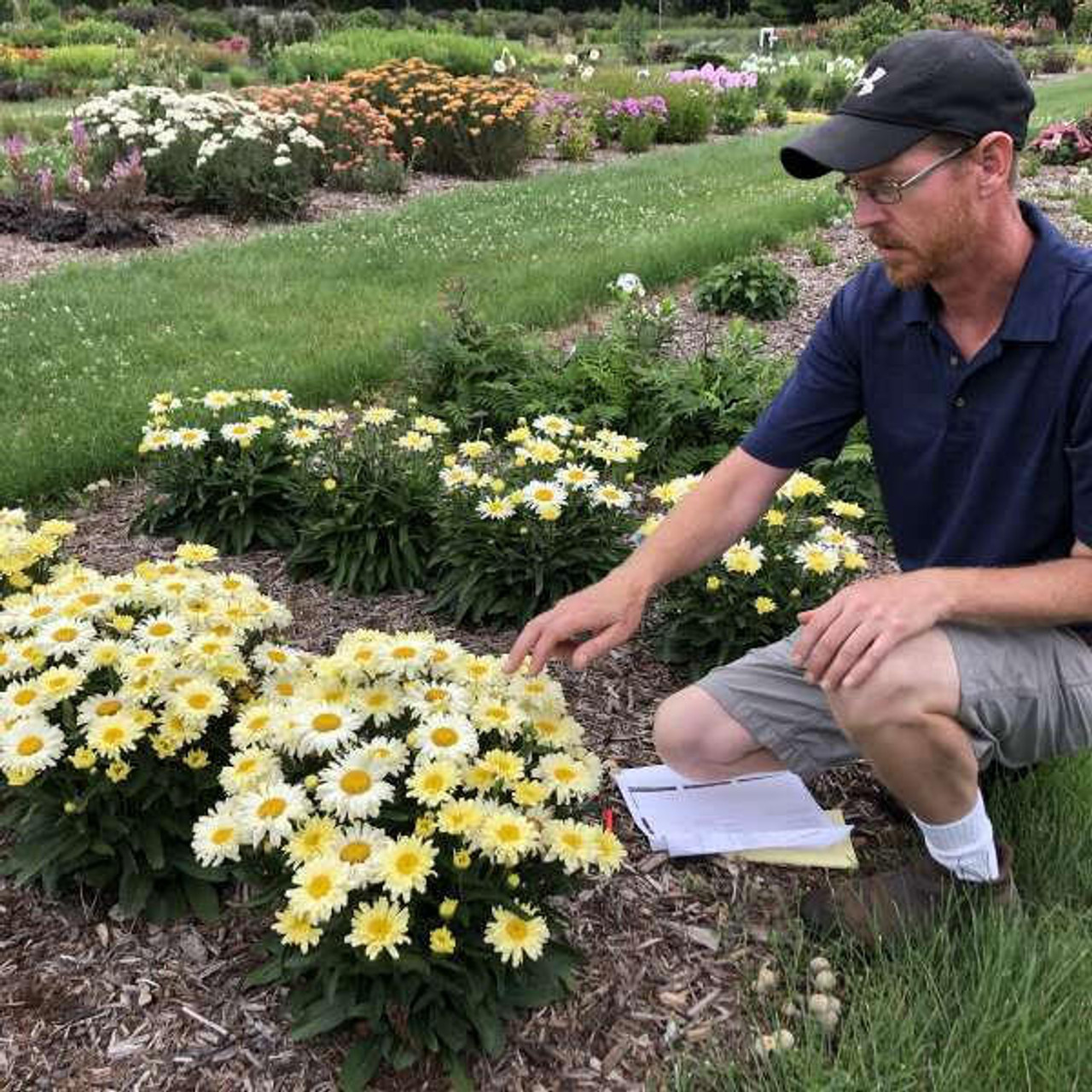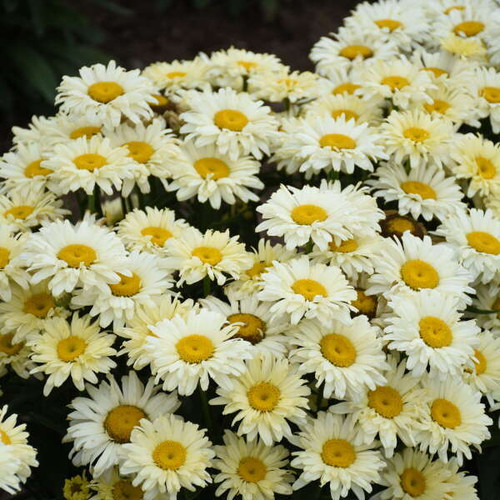Product Description
Leucanthemum superbum 'Banana Cream II' PP33851 CPBRAF (4) 1-gallons
AMAZING DAISIES® Collection
Common Name: Shasta Daisy
This improvement on the classic 'Banana Cream' takes all the characteristics that gardeners love and kicks it up a notch. Just like the original, flower buds are lemon yellow and eventually brighten to creamy white. Improvements include being more floriferous, holding the yellow color longer, a more appealing habit, and earlier to start flowering. Growers will love that the vernalization week requirements are much shorter — we recommend 4-6 weeks for best performance, although we have observed flowering without vernalization.
Shasta Daisies are all-time favorites for the perennial border. The cheery flowers begin to appear in early summer and continue on for several months if faithfully deadheaded. Shastas mix so effortlessly with other perennials that no garden should be without them!
Leucanthemums require full sun and well-drained soil to be at their best. Winter drainage is especially important; planting in raised beds will help to provide these conditions. Shastas make good perennials for Southern gardens, though partial shade is recommended in the warmest zones.
Leucanthemum superbum 'Banana Cream II' is a delightful Shasta Daisy cultivar that offers a unique color-changing spectacle in the garden. Its flowers open with a bright lemon yellow hue, gradually transitioning to a creamy white as they mature, creating a captivating display of color.
- Flowers: Large, 4-5 inch wide flowers that start as a vibrant lemon yellow, then soften to a butter yellow, and finally mature to a creamy white. This multi-toned effect creates a captivating display.
- Bloom Time: Prolific bloomer throughout the summer, providing long-lasting color.
- Foliage: Compact, dark green foliage that forms a neat mound, providing a lush backdrop for the flowers.
- Growth Habit: Upright and sturdy, reaching a height of 15-18 inches with a similar spread.
- Hardiness Zones: 5-9
- Light: Full sun (at least 6 hours of direct sunlight)
- Soil: Well-drained soil. It prefers fertile soil but can tolerate average garden soil.
- Water: Moderate water needs. Drought tolerant once established, but benefits from regular watering during hot, dry periods.
- Uses: Excellent for borders, containers, mass plantings, and cutting gardens.
Benefits:
- Unique Color Change: The captivating transformation from lemon yellow to creamy white adds a dynamic element to the garden.
- Long Blooming Season: Provides continuous color throughout the summer months.
- Compact Habit: Perfect for smaller gardens or containers where space is limited.
- Sturdy Stems: The flowers are held on strong, upright stems, reducing the need for staking.
- Disease Resistant: Exhibits improved disease resistance compared to older cultivars.
Growing Tips:
- Planting: Space plants 18-24 inches apart to allow for adequate air circulation and growth.
- Watering: Water regularly during the first growing season to establish a strong root system. Once established, it can tolerate some drought. 1
- Fertilizing: Not generally required, but a light application of fertilizer in spring can promote growth and flowering.
- Deadheading: Remove spent flowers to encourage continuous blooming and prevent self-seeding.
- Dividing: Divide clumps every 2-3 years to maintain vigor and prevent overcrowding.
If you are looking for a Shasta Daisy with a unique color-changing twist, Leucanthemum superbum 'Banana Cream II' is an excellent choice. Its vibrant blooms, compact habit, and easy-care nature make it a delightful addition to any sunny garden.
Height: 20.0-24.0 Inches
Spread: 20.0-22.0 Inches
Hardiness Zones: 5,6,7,8,9
Flower Color: Yellow Shades
Foliage Color: Green shades
Full Sun
Low to Average Water Needs
Average to Fertile Soil Quality
Bloomtime: Early to Late Summer
Long Blooming Rebloomer
Attracts Butterflies
Bee Friendly
Growth Rate: Medium to Rapid
Border Plant, Container, Cut Flower, Easy To Grow, Mass Planting
(4) 1-gallon containers ready to plant, plants maybe trimmed for shipping,
Other Details
The most important part of the plant is its root system. Healthy roots are the foundation of a healthy, vibrant plant. The type of plug container used is based on the specific needs of the plants. Perennials offered as bare root traditionally perform better when planted as bare root.Planted in a specialized mix, potted plants have well established root systems. Top growth stage will vary depending on the current life cycle and time of year when shipped. In Winter and early Spring dormant plants may be shipped. Dormant plants may be planted right away, even before the last frost date.
Most bare root varieties are field grown for at least one season, though Hemerocallis and Hosta are grown for two seasons. The bulk of the soil is removed during the harvesting process and the tops of most varieties are trimmed back to the crown. They are graded, packed in shredded aspen or sphagnum moss and stored in freezers until ready to be shipped.
See our Container Sizes and Bare Root Perennials pages for more information.
Plant information and care is provided in the Overview section, Plant Genus Page and general information is provided in the Planting Care & Guides. Additional questions can be asked on each Plant page.
Plant Spacing: Using the maximum mature spread or width of a plant to guide spacing, ensures space to grow to full size. To fill an area sooner, plant them closer together. Just remember, future thinning or transplanting may be needed.
Water: Keep a close eye on newly planted perennials, especially throughout the first growing year. Most early plant loss is due to too much or too little water!










